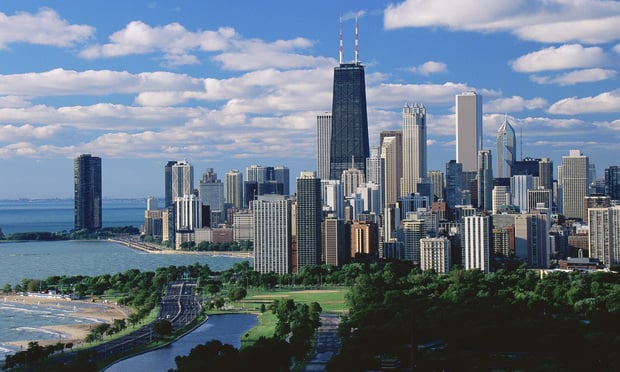CHICAGO—As reported yesterday in GlobeSt.com, the Real Estate Publishing Group brought more than 1,000 real estate professionals to the Hyatt Regency Chicago on Wednesday for its 14th Annual Commercial Real Estate Forecast Conference, and a big topic was the prospect for a continued migration of suburban companies into the city. Matt Carolan, managing director of Chicago-based JLL, told a morning panel that the gravitational pull of the downtown was unavoidable.
"The truth of the matter is that every company is a tech company now," he said, because all need to utilize the power of the web and the analytical tools now available through computers. And that means in turn that companies need to recruit the young talent essential to such work. That frequently means an urban location "because the younger folks want to live in the city." Although he understands many firms have an attachment to certain suburbs, "they also better open up an office in downtown Chicago."
The competition between suburban and urban regions does not revolve around things like real estate costs so much as transit issues and how they impact talent recruitment, he added. Many millennials have not even bothered to get drivers' licenses, further increasing their dependence on public transportation. The new Fulton Market area, once a gritty industrial neighborhood, but now the home of Sterling Bay's 1KFulton project and Google, was a good example of the key role played by trains in creating submarkets that younger workers find appealing. "If that new Green Line stop never went in that market may never have taken off."
Recommended For You
Want to continue reading?
Become a Free ALM Digital Reader.
Once you are an ALM Digital Member, you’ll receive:
- Breaking commercial real estate news and analysis, on-site and via our newsletters and custom alerts
- Educational webcasts, white papers, and ebooks from industry thought leaders
- Critical coverage of the property casualty insurance and financial advisory markets on our other ALM sites, PropertyCasualty360 and ThinkAdvisor
Already have an account? Sign In Now
*May exclude premium content© 2025 ALM Global, LLC, All Rights Reserved. Request academic re-use from www.copyright.com. All other uses, submit a request to [email protected]. For more information visit Asset & Logo Licensing.








